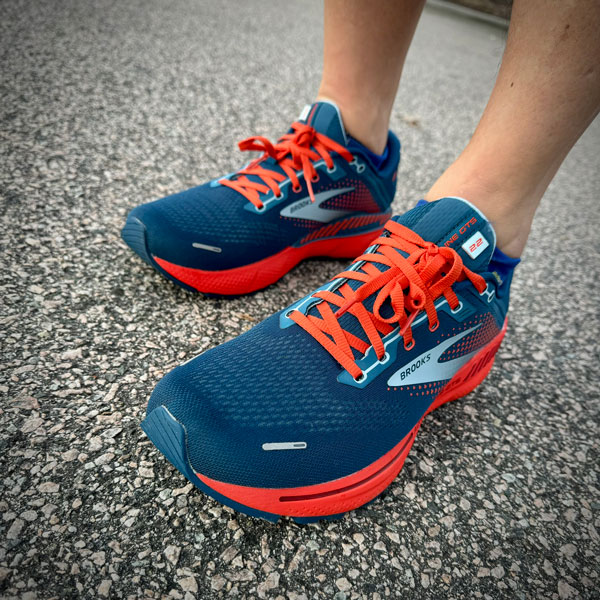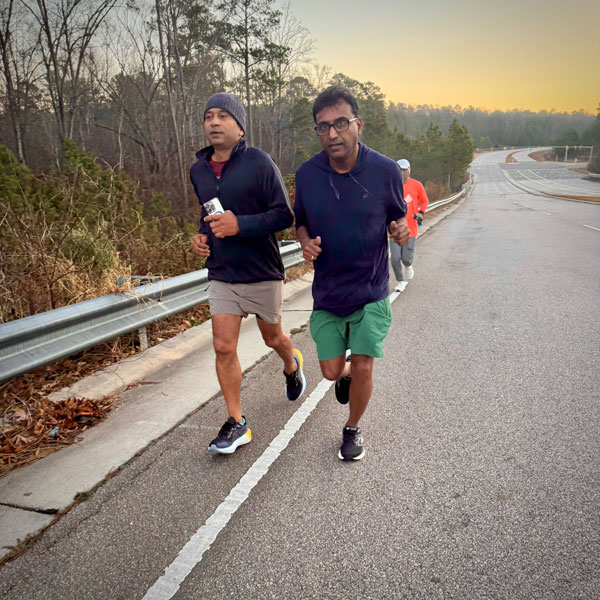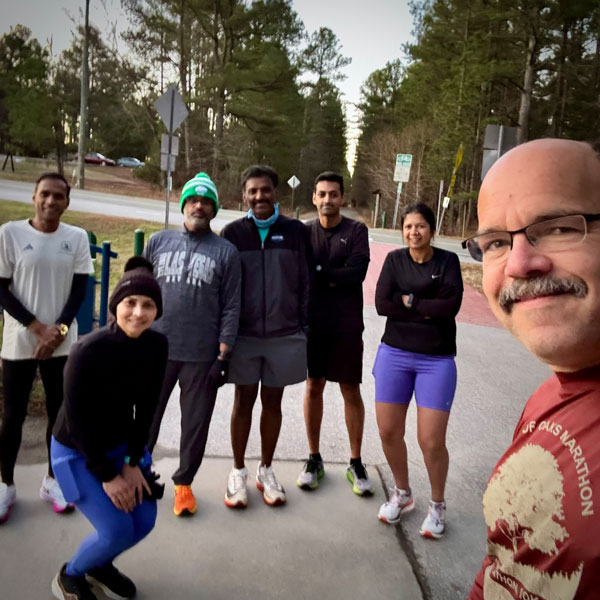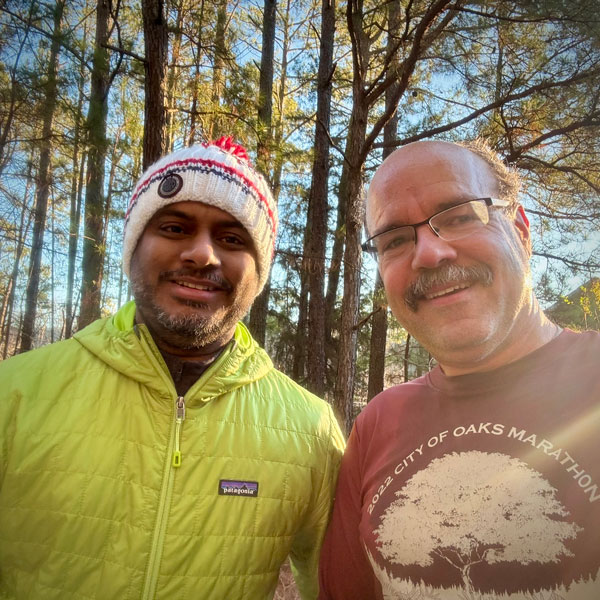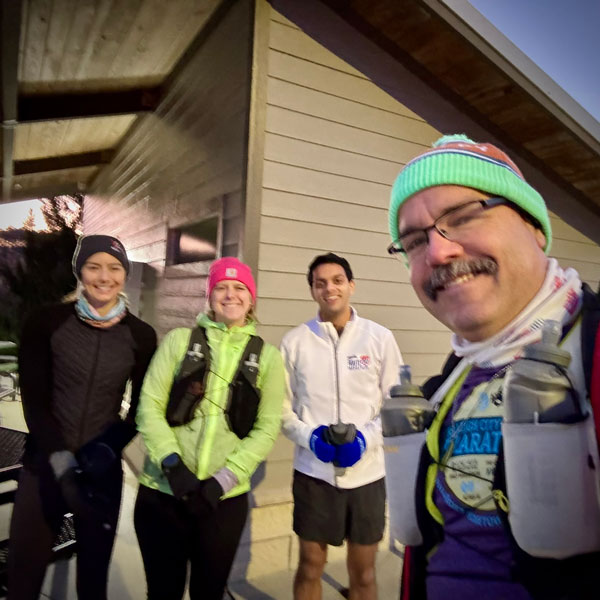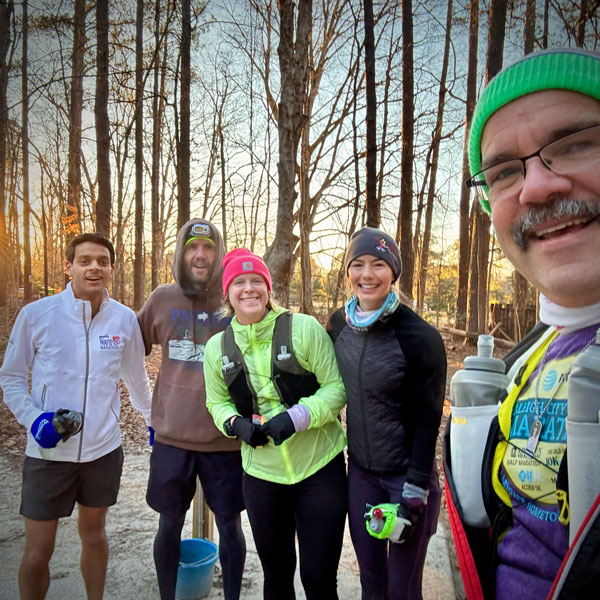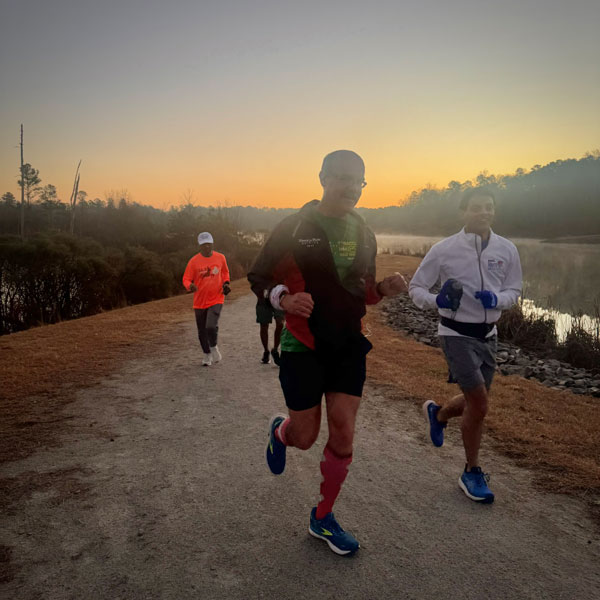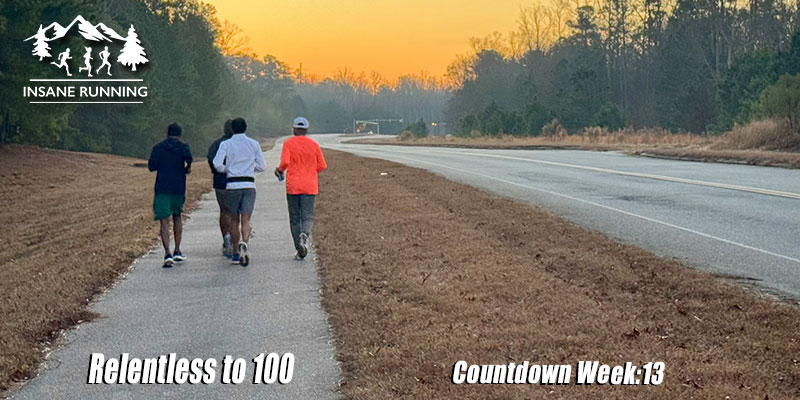Relentless to 100: Week 13
If you have been following the weekly plan and updates by now, you probably just realize that there is going to be not only lots of miles but a lot of time on your feet. You perhaps have another runner or friend training for the same or similar event and are spending runs together, especially the long runs. Or perhaps you are part of a running club or group that you can run with during a few of their scheduled group runs. Maybe you are used to running by yourself and do not need any company; just passing familiar faces during the runs is enough, or you might like the solitude or mindfulness of the lone, long run.
This is part of a series of posts regarding how we prepare, plan, and train to complete the 100 miles Ultramarathon Umstead 100: Relentless to 100. For all the ultrarunning series, here is Relentless to 100, last week’s post, and for additional ideas, follow the link. Training for a 100.
Regardless of the preference, you might want to take this week to think about how you are going to tackle time during the event, especially if you find yourself in a long section with no one to talk or be with.
Assessment:
With the event in mind, take an assessment of the different segments of the event and start planning to put together an approach.
- Looped events: With this type of event, you might have the luxury of assigning specific themes to each loop. If there are four loops, you might want to select music from the different decades or have a few podcasts ready for each segment. Audiobooks (short ones) are also good options. Are you going to capture the experience on a camera phone or other video/picture device? Plan for when you would like to do that.
- Point to point: Similar to the looped, divide the event mileage into different segments. Aid station to aid station or point of interest, the crest of a hill or climb, the view toward the city or lake. The river/creek crossing or the iconic bridge could also be options to use to divide the route and mileage. Similar to the looped version, assign an intention and approach to each one of the segments.
- Be Flexible: Open up to other ideas and themes that you could, on a limited basis, try during the long run. You do not want to lose the novelty effect and be tired of that type of listening and thinking before your event. Not everything is going to work out as planned, and minor adjustments are going to be necessary.
The answers will help you get ready for the next step, the planning session, as you might want to start creating a list of the different alternatives available to you.
Planning:
Get ready to write down the list or map that will serve as a guide, an initial guide at this time of what you could use, the approach that will help you keep your mind sane during the event. You will be revisiting the plan as new ideas will come to mind during the training journey.
- Divide the music into possible genres: Rock, Latino, Pop, 80s, Romantic, Heavy Metal, Mariachi and Boleros, Early High School years, most recent hits, country, Salsa and Merenge, Oldies, and others. Right there, there are over ten options. Create playlists and try them during the training runs. Prune, change, and add as you go. You want to have enough time in each playlist to cover the segments plus.
- Find interesting podcasts, stories, or audiobooks: Similar to the music, find those topics that are of interest, pre-download those into your device(s), have them ready, and check the length. For me, I have used This American Life, Hidden Brain, Happiness Lab, Revisionist History, Freakonomics, Strength Training, Science of Ultra, Choiceology, How I Built This, The Knowledge Project, La Brega, and others.
- List your device’s battery life: This goes for your player and for your wireless headset if not using a wired headset. If the device lasts 3-4 hours you might need to consider using multiple or plan with your crew or station to have the availability to either re-charge or change over a new one. I do have multiple I-Pod shuffles (They are discontinued) with wired headphones that I could use during the looped events. They are old, so the battery life does not last multiple loops.
- Consider the other activities: Keep in mind that during the 1st few files, you will most likely be talking to other fellow runners running the event. Also, if the event allows for pacers (Normally after certain covered mileage, in my case after 50 miles), the pacers will also talk to you and keep your mind fresh. In my case, I plan to have enough playlists for three solid loops (38 miles) and partial playlist time coverage loops after I am able to have a pacer running with me.
- Consider dedicating a segment: During the event, another option could be dedicating a segment or loop to someone or a specific time in your life. The time you are setting specifically where you are going to spend thinking, reflecting, thanking/gratitude, and moving forward. Maybe miles 1-10 for friends, then miles 11-20 for family, miles 50-70 to the accomplishments that got you where you are now, and so on.
- Ask for help: Ask friends and family to provide a recording (video/audio/written) providing a few words of encouragement and shared memories that you could have handy during the event. Especially during the darkest moment when you are going to need that extra push, click, and motivation to continue to put one foot in front of the other.
Plan, prepare, adjust, and do not leave it until too close to the event, as you might need to procure, test, and adjust. No surprises.
This week’s actual numbers:
| Week 13 | Mon | Tue | Wed | Thur | Fri | Sat | Sun | Total |
| Plan | Stretches & Rolling | 6 | 5 | 6 | Rest | 18 | 16 | 51 |
| Actual | Stretches | 6 | 6 | 6 | Stretches | 18 | 17 | 53 |
Next Week Plan:
| Week 12 | Mon | Tue | Wed | Thur | Fri | Sat | Sun | Total |
| Plan | 6 | 6 | Rest | 3 | 6 | 13 or 15 | 26 or 20 | 60 |
